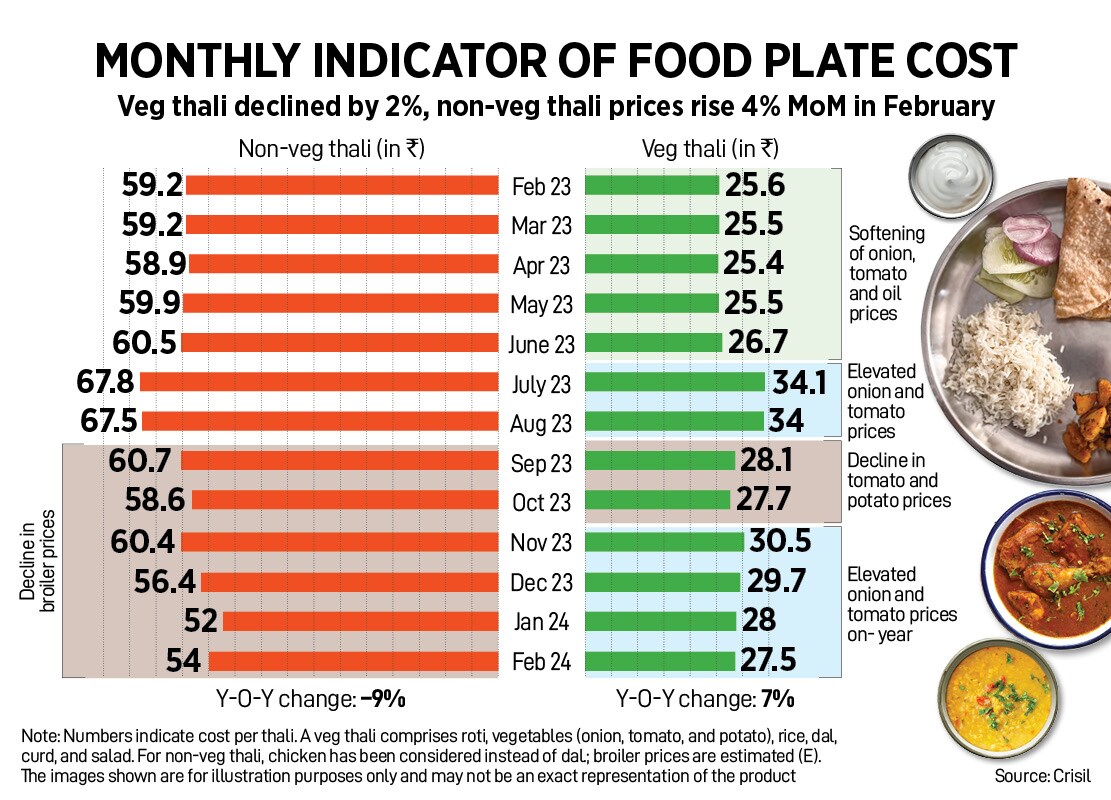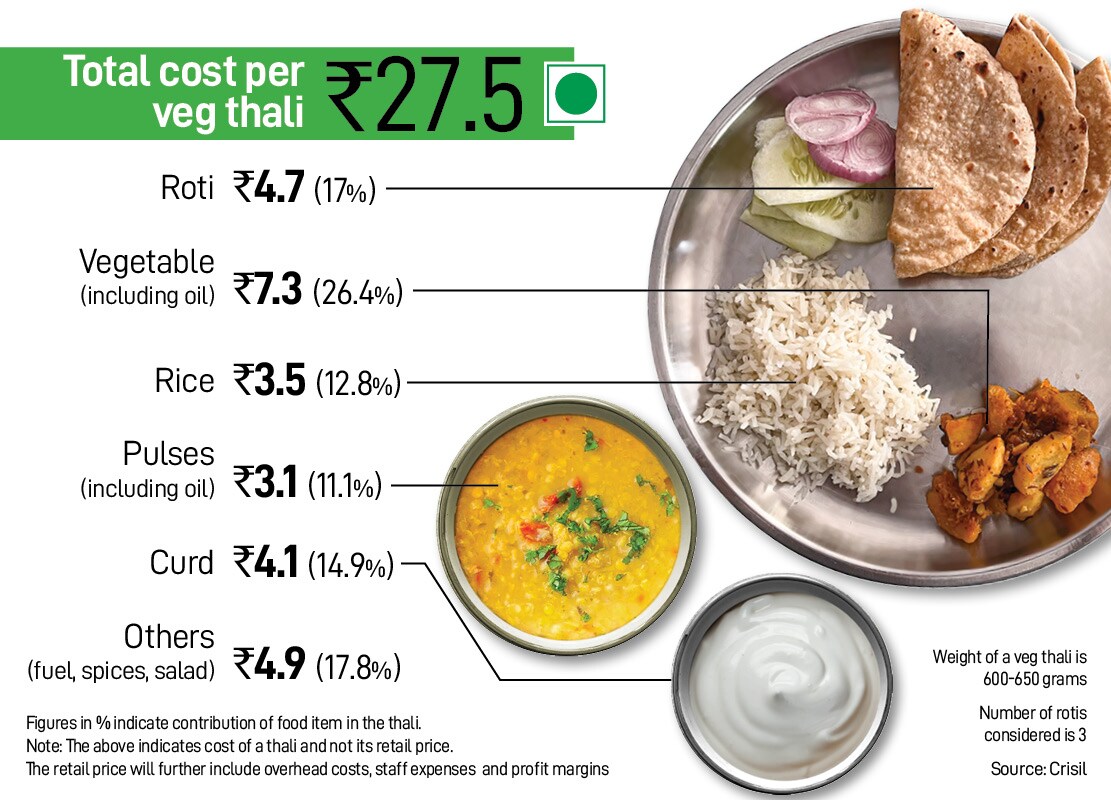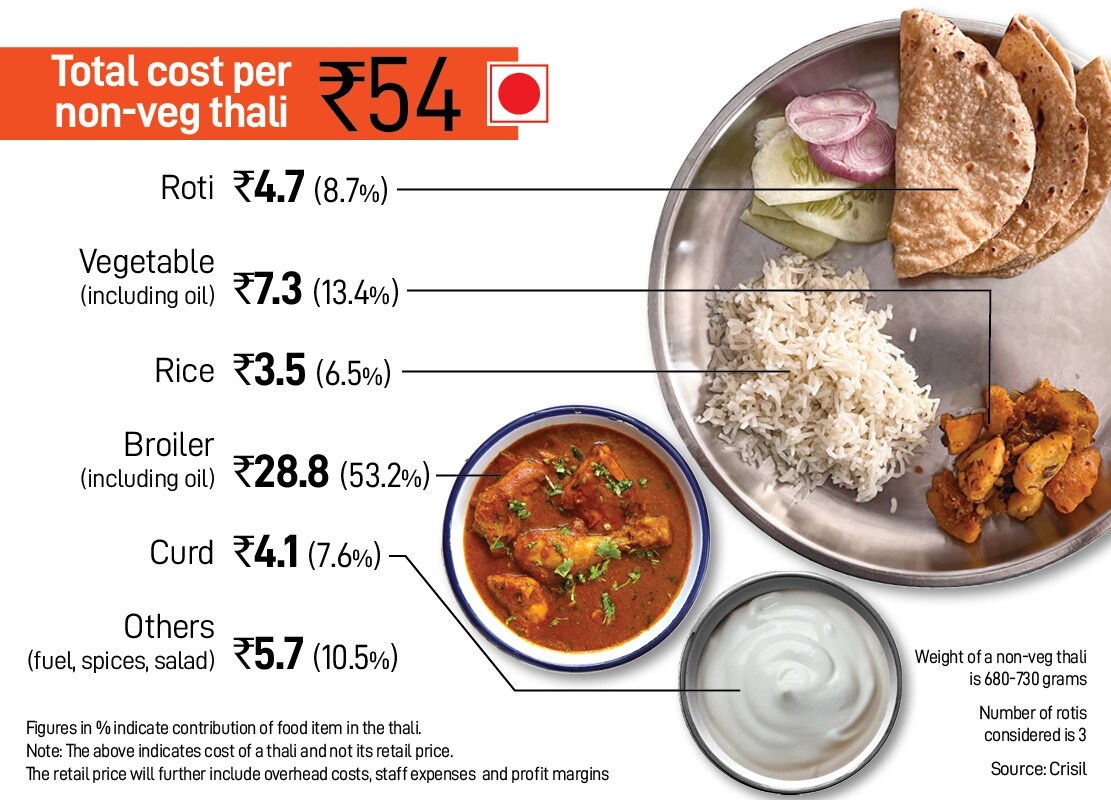
How India Eats: Cooling poultry prices keep non-veg thali cost low in February
Prices of onion surged 29 percent and tomato jumped 38 percent YoY, making the vegetarian thali expensive in February. Rice and pulses also got expensive, but poultry prices have been declining

Has the overall cost of a home-cooked thali or a food plate increased in February? Well, it depends on what key food items the consumer picks up for his plate. Rise in cost of vegetables like pulses, rice, onion and tomato made a vegetarian thali expensive while cooling poultry prices dragged the non-vegetarian thali to become cheaper in February on a yearly basis.
The average cost of a representative home-cooked vegetarian thali increased 7 percent to Rs 27.50 in February from Rs 25.60 in the same month last year, based on an analysis by Crisil. However, compared to January, the price of the same vegetarian thali has dropped nearly 2 percent from Rs 28.






